We needed storage space for five generations of family memorabilia, enough to fill a small museum. The house was full, the garages were full, the sheds were full. I thought perhaps a Sea-Land container would fit the bill. Then, while looking on the Internet last summer, I saw it: a caboose for sale on eBbay – not what we needed for storage, but a fantastic idea nonetheless. I passed on the eBay caboose, though; it would take a couple of weeks before I could muster enough courage to bring up the idea with my family. To my surprise, my wife okayed the project and our search for a caboose began to unfold.
The preliminary step: finding cabooses, contractors, and movers
Using the Internet, I was soon in contact with other caboose owners and brokers. Typing the word “caboose” into the search engine yielded hundreds of hobby shops and individuals with scale models for sale. Adding qualifying words such as “real” or “full-size,” narrowed the search down to web sites devoted strictly to authentic cabooses. (Sorting the listings by sales price also helped. No N-scale caboose that I know of costs $15,000!) All of the caboose owners I emailed responded with helpful information, warnings, and encouragement.
If you’re thinking about purchasing a caboose, consult the lists of qualified dealers, brokers, contractors and equipment suppliers, and other caboose-related web sites found at the end of this article.
Before I could make a serious purchase inquiry, however, I needed to make sure I could arrange for transportation from the nearest rail yard to my property, a distance of 20 miles. I called several crane companies, all of whom gave me estimates in the range of a budget-busting $12,000. Then a nearby caboose owner I met put me in contact with a house mover who had experience transporting cabooses. The mover determined he could do the job for somewhere between $2,000 and $4,000.
A-hunting we will go
Two railcar brokers were very helpful in educating me on what it takes to install a caboose in your backyard: John Salisbury of JFS Railcar and David Thebodo of Rail Merchants International. They each had cabooses for sale in Iowa, Washington, Texas, and elsewhere.
After much thought, I was able to narrow my search to three sites with eligible cabooses: Cheyenne, Wyo., Fairfield, Iowa, and Memphis, Tenn. I arranged meeting times with the owners at each location and also planned a stop at Rescar, a railcar refurbishing shop in Hudson, Colo., to look at some boxcars for sale.
Although going by train might have been the most fitting way to conduct the search, the logistics of the trip and traveling with our 20-month old son dictated that we rent a minivan. As we stopped and conversed with people in various towns, restaurants, and rail museums along the way, I was surprised to learn how many other people owned cabooses. “Oh yeah, I know someone who has a caboose for a mountain cabin,” I heard on several occasions, or “Gee, I would like to put one on my property some day.” It was nice to get so much assurance that I wasn’t crazy.
Decision time
Buying a caboose is a cross between buying a house and buying a used car. You want to take your time and make the right decision, but you know that if you hesitate, someone else could grab your first choice.
Our first stop was the Union Pacific yard in Cheyenne. I called ahead and was given directions to ten cabooses coupled together on a siding. We went into each one, taking pictures of the interior and exterior. They were in rough condition: some were completely gutted, and in one the floor was missing! Even the best of them would need quite a bit of work. The prices were economical, at $9,000-10,000 each, and would have been perfect for someone looking to gut a caboose and remodel it. But I was looking for one in the same condition that it had been while in service. As an alternative, I considered the possibility of shipping one of the UP cabooses to Rescar for restoration, and kept this in the back of my mind while the search continued.
A few days of driving brought us to Fairfield, Iowa to see the next candidate: an ex-Santa Fe caboose, parked on a siding behind two fast-food restaurants – big as a house, sitting adjacent to a parking lot, looking like a used car for sale. It was in good condition and quickly became our most promising candidate. We had one caboose left to look at: a Missouri Pacific caboose in good shape but off rail in Tennessee.
It didn’t take long to decide on the classic red caboose in Iowa. ATSF 999565 was a Santa Fe model CE-9 caboose built by American Car & Foundry in 1927, then rebuilt by Santa Fe in 1970 and again in 1978. It was intact and on an active rail siding.
The caboose had last moved in 1991 and would need some repairs before it could move again. Repair costs were difficult to calculate precisely; estimates ranged from $0 to $2,500. I agreed to pay $1,000 over the asking price if the seller would pay all the costs necessary to get the caboose in good enough condition to be shipped by rail. The seller accepted, and also offered to make arrangements with the BNSF Railway for shipment from Fairfield, Iowa to San Diego. I was to pay the actual transportation costs.
After making the arrangements, we headed home, although not without a few second thoughts. I had just written a check for $18,500 and all I had was a handwritten bill of sale. No DMV registration, no escrow – nothing. What if I didn’t get my caboose? What if I did?!
Working on the railroad
While the caboose received a few last-minute repairs before being shipped, I scrambled to make sure I had a place to put it.
I finalized payment and a work schedule with contractor H&H Engineering. Soon six workers were at my house dumping gravel, placing crossties, and laying rail. The hydraulic spike drivers certainly didn’t have the nostalgia of the old sledgehammers, but they got the job done quickly and with fewer people. The project was not without some unexpected obstacles, though: we soon discovered that the property was on a grade and had to be leveled off. At one point the rented bobcat broke down. But the contractor came through.
Soon, I had 99 feet of railroad track and 55 tons of ballast in my backyard, which would either become the foundation for a caboose…or a perpetual monument to my inability to complete a project. I had to see it through!
There’s something about a train
Once repairs were completed, the caboose was ready to be shipped. BNSF was the contracted railroad and I was able to follow the caboose’s movement west using their web site or by phoning the service support department. (See the complete movement schedule at the end of this story.)
According to the computer, the caboose had moved from Fairfield to Ottumwa, Iowa, then sat for a week. I phoned BNSF to find out what was causing the delay. (“Excuse me, have you seen my caboose?”) Then, a call to the previous owner revealed that the caboose was still in Fairfield. It hadn’t been picked up yet.
All told, the rail journey from Fairfield, Iowa to San Diego took almost three weeks.
Because of the scheduling uncertainty involved in shipping a railcar, I was unable to set a firm date in advance with the house mover. For six weeks the caboose sat in the San Diego rail yard, coupled to BNSF’s own caboose.
Finally, on the appointed day, the mover and I went down to the yard…only to find the caboose was gone! There had been a minor derailment and BNSF had relocated the two cabooses to another part of the yard in order to repair the damaged track. We had to reschedule the move.
Hauling a caboose 20 miles on local roads would require permits from three cities and the California Highway Patrol. Fortunately, the house mover had experience securing permits and was able to make the appropriate arrangements. However, it still took several weeks – and some anxious fretting – before our request was approved.
Three days were needed to cover the distance. On Day One, the movers jacked the caboose up off the rails, then pulled out the bogies and replaced them with house-moving dollies. To complete this process, the stairs at one end of the caboose had to be cut with a torch. Using a truck-mounted hoist, the two bogies – weighing six tons apiece – were lifted up and placed on a flatbed truck. The caboose was then positioned on the dollies, in which condition it was left to spend a final night on the property of its former owner Santa Fe.
We got ourselves a convoy
Bright and early the next morning, a six-car parade assembled to escort the caboose on its 20-mile highway journey. A pickup truck carrying a “Wide Load” sign served as the pilot vehicle, followed by the flatbed truck with the bogies on it towing the caboose. Behind it was another flatbed fitted with hydraulic pumps and a hoist (needed later to drive the jacks and lift the caboose). I followed in my pickup truck, along with two other cars carrying the families of the house movers, whose children wanted to watch the caboose being towed. (By law, only a leading and trailing vehicle were required.)
The loaded caboose reached a height of 17.5 feet – still short enough to clear all bridges, phone lines, and trolley cables along the route. To avoid peak traffic, the three townships restricted our move to a window between the hours of 9 a.m. and 3 p.m. Although the caboose could be towed safely at speeds of up to 30 mph, we seldom approached that.
As the parade made its way through the streets of Southern California, onlookers pointed their fingers and ran to get cameras. “Don’t bring that thing in here,” yelled one mechanic whose shop we stopped in front of. “We haven’t got the tools for it!”
By afternoon we had reached my town, and began looking for a parking space where the caboose could sit over the weekend until the movers were ready to complete the job.
First stop was the overflow parking lot of the Catholic church-not a good idea since the lot would soon be full of churchgoers attending mass, and it would be obvious whose caboose was hogging all the parking spaces! We found a better spot at a nearby school. (Rumors later spread that the town had rented the caboose as part of their civic festival the following weekend.)
Unloading
On Monday morning, the house movers drove up to my property and placed one of the bogies onto the railroad track. The crew then went back to the school parking lot for the flatbed truck. As the caboose was being towed away, the entire kindergarten class stood outside and watched.
Unlike a regular flatbed trailer, all of the wheels on the house-moving dollies could be steered using a block and tackle setup. This proved invaluable as we began to negotiate our winding dirt driveway. Partway up the drive, however, the dolly wheels started spinning in the dirt, despite the presence of the second bogie which had been kept on the flatbed for traction.
The only way to complete the move was to disconnect the truck, park it on the level area next to the railroad track, and use the truck’s winch to pull the caboose home.
Once the caboose arrived, it was a matter of reversing the process done at the rail yard. The caboose was jacked up, the house dollies were pulled out, the second bogie was rolled underneath, and the caboose was lowered onto both bogies. After the caboose was safely positioned on the bogies, the brake links were hooked up and the stairs were replaced using ½-inch bolts instead of rivets. The caboose was then rolled to its final position on the track and the brakes were set.
To make sure the caboose stayed put even if someone released the handbrakes, I used a trick I had learned at the Colorado Railroad Museum on our trip: I wrapped a length of ¾-inch steel chain around one wheel, which acted as a chock on both sides, then secured the chain with a padlock.
I now have a beautiful caboose in my backyard and enough track for another railcar. The view from the cupola is spectacular, overlooking a valley and a schoolyard. My two-year-old son thinks of it as his new playhouse. (Indeed the whole caboose project might not have been possible without having a two-year-old as an excuse for buying one.)
Of course, I still don’t have the needed storage space that triggered the caboose-buying odyssey in the first place. We recently budgeted $10,000 for a 50-foot boxcar, and its 5,000 cubic feet of storage, that could fit on the remainder of the railroad track. Or would a bay window caboose be better? Then again, I could always buy that Sea-Land container. Maybe I can find one on Ebay.
Grading……Done as a favor by a friend with a tractor
Installing 99 feet of railroad track and ballast……$5,200
Two-week car trip to inspect eligible cabooses……$1,800
Long-distance phone calls……$200
Purchase price of the caboose……$18,500
Rail transportation from Iowa to California……$1,952
Security guard for one night the caboose spent on dollies near the railroad yard……$140
Highway transportation from rail yard to backyard, 20 miles……$4,000
One 4D battery (originally took three)……$180
Solar charging system……$325
Chains and lock to secure the caboose on the track……$50
TOTAL……$32,347
Fairfield, Iowa …… 7/22/00
Galesburg, Ill. …… 7/27/00
Callilo, Mo. …… 7/31/00, 11:30 a.m.
Bucklin, Mo. …… 7/31/00, 12:14 p.m.
Kansas City, Mo. …… 8/2/00
Kansas City, Kan. …… 8/3/00; Train: MKCKBAR1-04 (Kansas City-Barstow, Calif.)
Fairfield, Kan. …… 8/4/00, 5:59 p.m.
Wellington, Kan. …… 8/5/00, 2:11 a.m.
Clovis, N.M. …… 8/5/00, 7:01 p.m.
Coronado Jct., Ariz. …… 8/6/00, 4:51 p.m.
Flagstaff, Ariz. …… 8/6/00, 11:18 p.m.
Needles, Calif. …… 8/7/00, 6:30 a.m.
Barstow, Calif. …… 8/8/00, 4:09 a.m.
Victorville, Calif. …… 8/9/00, 4:26 p.m.
Attwood, Calif. …… 8/9/00, 8:56 p.m.
San Diego, Calif. …… 8/10/00, 12:20 a.m.
Conrail Cabins and Cabooses: Owner’s Exchange
Links to individuals and brokers with cabooses and private cars for sale and lease.
D.F. Barnhardt & Associates
A rail equipment broker with cabooses for sale. They also conduct appraisals and auctions. Based in Mount Pleasant, N.C.
David J. Joseph Company Railcar Sales
A large iron and scrap company in Cincinnati, Ohio that maintains an inventory of railcars for sale and lease.
JFS Railcar Inc. Caboose & Train Sales
A broker based in Independence, Mo. with a supply of cabooses, passenger cars, and equipment for sale.
Rail Merchants International
A broker in Fairfield, Iowa with cabooses, locomotives, motor cars, and passenger cars for sale or lease. Another division also buys, sells and leases deluxe private passenger cars.
Rail Swap Free Classifieds
A web site to buy, sell, and trade, railcars, locomotives, parts and equipment. Posting an ad is free. Includes links to professional craftsmen, suppliers, and consultants.
Adams & Westlake Ltd.
Elkhart, Ind. metal company that provides machining, welding, metal fabrication, finishing, assembly, and other engineering and manufacturing services. They have an onsite foundry and pressroom.
A&K Railroad Materials, Inc.
With plants and warehouses around the country, A&K will lay railroad track and switches, or take up track as needed.
Atlantic Track & Turnout Company
A manufacturer and distributor of rail sections, switches, turnouts, trackwork products, and accessories.
H&H Engineering Construction, Inc.
Western U.S. contractor specializing in railroad construction and design, as well as track maintenance, track rehabilitation, and material supply. Works with several Class 1 and shortline railroads.
Merrilees
Canadian seller of new rail, as well as rail, crane, and track accessories. A locomotive division performs maintenance and overhaul of engines and railcars, with an assortment of motive power also available for purchase or lease.
The Nolan Company
Manufactures a large assortment of rail products, such as wheel chocks, car blocks, bumping posts, wheel/axle assemblies, and derails, to name a few.
Western-Cullen-Hayes
Manufacturer with two lines of products: grade crossing components and equipment; and track hardware and safety accessories. Track hardware components include derails, switch point guards, gauge rods, wheel stops, jacks, drills, and more.
Arkansas-Missouri Railroad
This short line based in Springdale, Ark. has a full-service car repair shop.
Gateway Rail Services
A firm based in Madison, Ill., which provides passenger railcar services from minor fix-ups to major upgrades through wholesale rebuilds to our clients (individual railcar owners, corporate owners, or government agencies).
Santa Fe Captive Cabooses
An page on the Atchison, Topeka & Santa Fe Railway Subjects web site (atsf.railfan.net) that tracks the disposition of former Santa Fe cabooses. Maintained by an individual for historical purposes.
The Antlers Hotel in Kingsland, Texas
Ex-Norfolk & Western cabooses converted into guestrooms.
Catawissa Rail Road Company
One Pennsylvania resident’s story of purchasing eight cabooses, some of which have been refurbished into guestrooms.
Featherbed Railroad Company Bed and Breakfast Resort
Nine cabooses, remodeled into different “themed” guestrooms, with dining facilities in a separate building. Located in Nice, Calif.
The Izaak Walton Inn
Renovated, heated caboose cottages overlook the historic Izaak Walton Inn in Essex, Montana…not to mention Burlington Northern Santa Fe’s helper station at the foot of Marias Pass.
The Red Caboose Motel and Restaurant
A stone’s throw from the Strasburg Rail Road in Pennsylvania’s Lancaster County, this motel features a host of cabooses, remodeled to accommodate parties of various sizes.
Last but not least, check out the August, 1990 issue of TRAINS Magazine. Their special “Farewell to the Caboose” issue features an article by Richard P. Reiff (“So You Want to Buy a Caboose?”) describing his experiences buying and moving a Santa Fe caboose of his own.





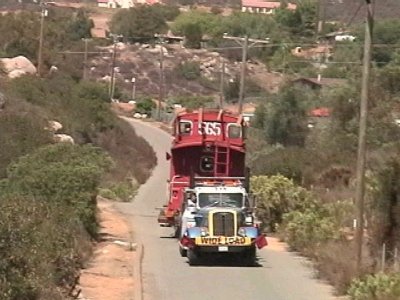
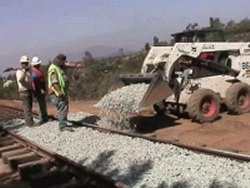
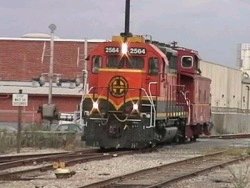
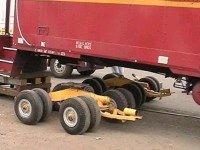
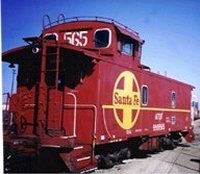









What a great article with lots of helpful information !!!
I’m looking forward to getting me one of them in the future.
Thanks Steve.
I am looking for information on restoration of a BN 1900ish caboose. We have a copper sink we are installing. Here is a link to a photo. What was the function of the upper circular drain above the faucet handles? We were thinking Shaving Brush Soap?
Thanks
Newton
https://www.ebay.com/itm/SINK-VINTAGE-RAILROAD-CABOOSE-Original-Wood-Backing-Brass-Copper-Train-Bathroom/122892038627?_trkparms=aid%3D222007%26algo%3DSIM.MBE%26ao%3D2%26asc%3D44040%26meid%3D83228d29445e4458aec9c82a2e76c047%26pid%3D100005%26rk%3D5%26rkt%3D6%26sd%3D282589343626&_trksid=p2047675.c100005.m1851
This caboose got used for a backdrop in a student video.
Oh Man! Great article! Well written! I'd love a follow up story!